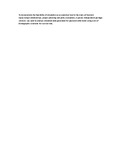| dc.description.abstract | To demonstrate the feasibility of simulation as an analytical tool in the study of livestock input/output relationships, project planning and policy evaluation, a species-independent package (DADAS) was used to analyse simulated data generated for pastoral cattle herds using a set of demographic constants for survival rate, ♀ sterility, age at 1st calving and calving interval. It was shown that a cow culling age of 11 yr would be expected to maximise offtake rate and to stabilise the cattle population. This threshold was derived by the deterministic module of the package used. An analysis of 6 offtake patterns using the stochastic module of the simulation program revealed that culling cows at an age limit was less successful than culling cows only when sterile. Within each offtake pattern, the cumulative effects of chance fluctuations in sex ratio of calves, mortality, sterility, age at 1st calving and calving interval resulted in variations between replicate herds in cattle wealth (number of cattle, productivity and health). It is concluded that livestock dynamics simulation on personal computers is feasible for planning, teaching and research purposes | en_US |

